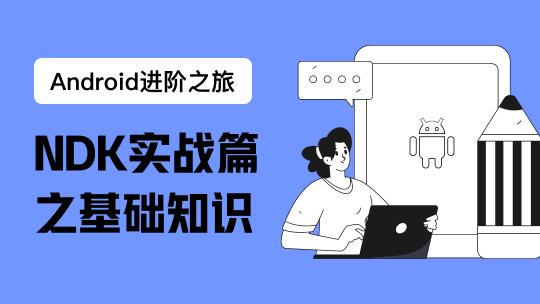概述
在 Netty学习(2)中,我们先浅浅认识了 NIO 的3大核心组件,现在就让我们针对其深入学习,通过一些简单的文件操作来深入理解其中的 Buffer 和 Channel 的概念。
文件写入
将内存中的数据写入到文件中,如果文件不存在,那么就新建文件。
// 数据 -> 文件
private static void dataToFile(String data, String filePath) {
// 构建输出流 -> 从输出流中获取 channel
try (FileOutputStream fileOutputStream = new FileOutputStream(filePath);
FileChannel fileChannel = fileOutputStream.getChannel()) {
// 设置缓冲区
ByteBuffer byteBuffer = ByteBuffer.allocate(BYTE_BUFFER_LENGTH);
// 将需要读写的数据放到缓冲区
int i = 0;
int length = data.getBytes().length;
// 一次就可以读完
if (BYTE_BUFFER_LENGTH > data.getBytes().length) {
byteBuffer.put(data.getBytes(), i, data.getBytes().length);
byteBuffer.flip();
fileChannel.write(byteBuffer);
} else {
// 一次读不完 需要循环读取
for (int temp = 0; temp < data.getBytes().length; temp += BYTE_BUFFER_LENGTH) {
byteBuffer.clear();
byteBuffer.put(data.getBytes(), temp, BYTE_BUFFER_LENGTH);
// 翻转缓冲区,可以对外读
// 这里的 flip() 是重点,其可以将Buffer的属性重置,可以对外写
byteBuffer.flip();
// 将缓冲区内的数据写到 channel中
fileChannel.write(byteBuffer);
}
}
} catch (Exception e) {
e.printStackTrace();
}
}
这样,我们就写完了一个文件写入的函数,在需要时传入指定的字符串即可。
文件读取
从文件中读取数据,并将其输出到控制台中。
// 文件 -> 内存
private static void dataFromFile(String filePath) {
File file = new File(filePath);
// 从输入流中获取 channel
try (FileInputStream fileInputStream = new FileInputStream(file);
FileChannel channel = fileInputStream.getChannel()) {
// 分配缓冲区
ByteBuffer byteBuffer = ByteBuffer.allocate(BYTE_BUFFER_LENGTH);
StringBuilder result = new StringBuilder();
while (true) {
byteBuffer.clear();
// 将 channel数据写到buffer中
int read = channel.read(byteBuffer);
// 因为byteBuffer大小原因,因此需要用一个中间字符串接受一下
result.append(new String(byteBuffer.array()));
if (read == -1) {
break;
}
}
logger.info("从文本读取结果:{}", result);
} catch (Exception e) {
logger.error("文件读取错误,错误原因 :{}", e);
}
}
文件拷贝
用 NIO 来完成文件拷贝,有两种实现方式,一种是用 Buffer 完成两个文件之间数据的转移,另一种是直接使用 Channel 来完成文件复制。
Buffer 完成
通过 Buffer 来完成文件复制,步骤如下:
获取源文件(source)和目标文件(target)的 channel;
设置缓冲区;
在循环中,通过缓冲区,将 source 的数据写入到 target 的 channel 中,完成写入,即复制成功。
// 将两个channel通过byteBuffer进行转移 private static void copyFileUseBuffer(String sourceFilePath, String targetFilePath) { File source = new File(sourceFilePath); File target = new File(targetFilePath); // 获取文件输入输出流 // 从输入输出流中获取输入输出 channel try (FileInputStream fileInputStream = new FileInputStream(source); FileOutputStream fileOutputStream = new FileOutputStream(target); FileChannel fileInputStreamChannel = fileInputStream.getChannel(); FileChannel fileOutputStreamChannel = fileOutputStream.getChannel()) { // 分配缓冲区 ByteBuffer byteBuffer = ByteBuffer.allocate(BYTE_BUFFER_LENGTH); // 将输入流中的数据写到缓冲区 // 这里需要循环读取,如果是大文件,不能直接建立一个很大的内存空间,直接全部放进去,并且还可能放不进去 while (true) { byteBuffer.clear(); int read = fileInputStreamChannel.read(byteBuffer); if (read == -1) { break; } // 翻转缓冲区 byteBuffer.flip(); // 将翻转后可以对外写的缓存区的内容写到输出流,从而形成文件 fileOutputStreamChannel.write(byteBuffer); } } catch (Exception e) { logger.error("文件复制错误,错误原因 :{0}", e); }
Channel 完成
但其实,Java 官方也考虑到这个需求,其内置了一个通道复制的函数,可以直接完成复制。
// 直接用channel的复制完成文件复制
private static void copyFileUseChannelTransfer(String sourceFilePath, String targetFilePath) {
File source = new File(sourceFilePath);
File target = new File(targetFilePath);
// 获取文件输入输出流
// 从输入输出流中获取输入输出 channel
try (FileInputStream fileInputStream = new FileInputStream(source);
FileOutputStream fileOutputStream = new FileOutputStream(target);
FileChannel fileInputStreamChannel = fileInputStream.getChannel();
FileChannel fileOutputStreamChannel = fileOutputStream.getChannel()) {
// 直接将输入channel复制到输出channel
fileOutputStreamChannel.transferFrom(fileInputStreamChannel, fileInputStreamChannel.position(), fileInputStreamChannel.size());
} catch (Exception e) {
logger.error("文件复制错误,错误原因 :{0}", e);
}
}
总结
本文,我们通过文件的读取,写入,复制,从而理解了 Buffer 和 Channel 的作用和使用方式,在后续的网络编程中,我们还要用到这些操作方式,以便逐步深入到 Netty 的学习范围。
本文中代码已上传到 GitHub 上,地址为 https://github.com/wb1069003157/nettyPre-research ,欢迎大家来讨论,探讨。

文章在公众号「iceWang」第一手更新,有兴趣的朋友可以关注公众号,第一时间看到笔者分享的各项知识点,谢谢!笔芯!













